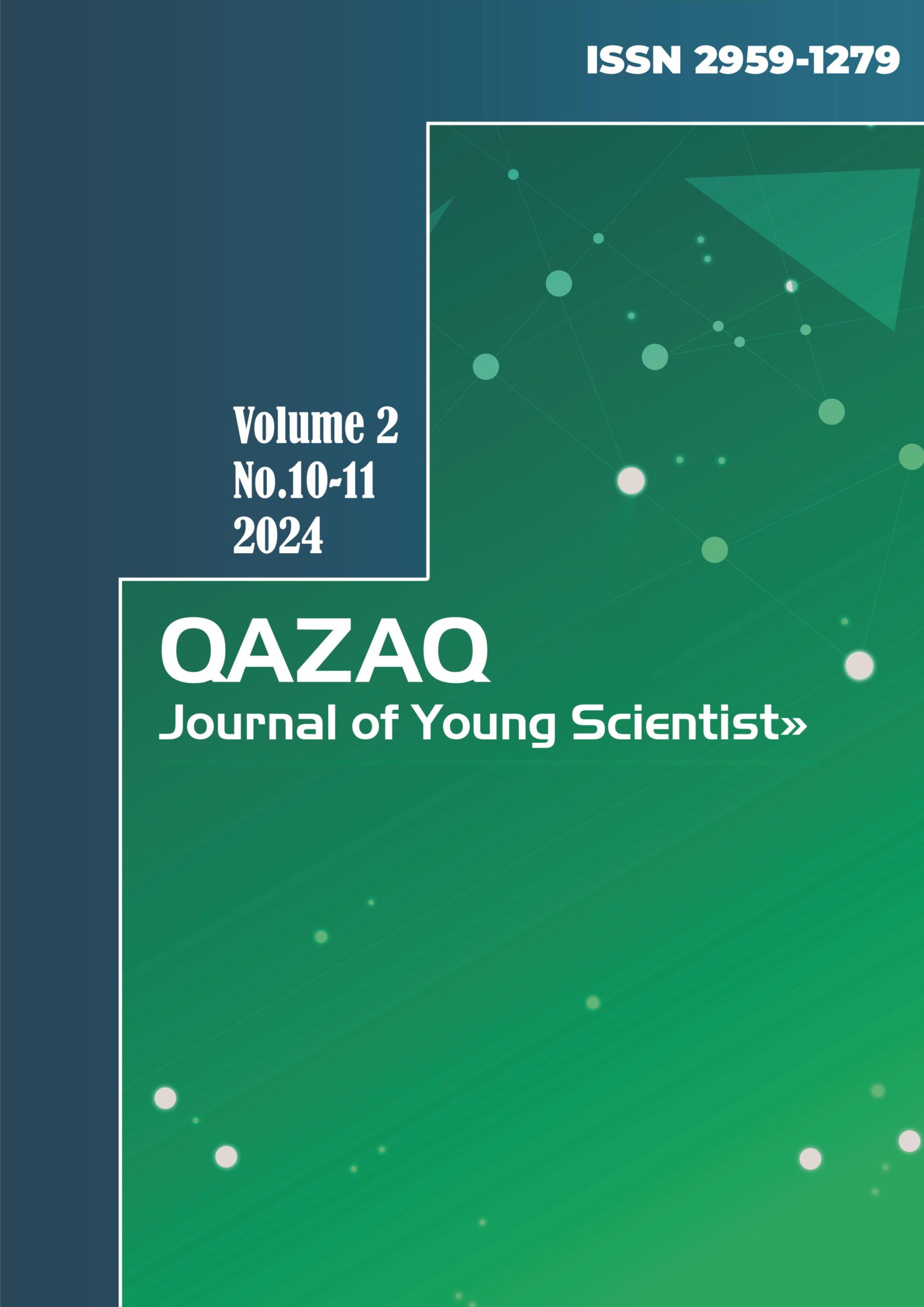ЖОҒАРЫ ТИІМДІ СҰЙЫҚ ХРОМАТОГРАФИЯНЫ ҚОЛДАНА ОТЫРЫП, АЛКОГОЛЬСІЗ ЭНЕРГЕТИКАЛЫҚ СУСЫНДАРДАҒЫ САХАРИН МӨЛШЕРІН АНЫҚТАУ
Main Article Content
Аңдатпа
Бұл зерттеуде жоғары тиімді сұйық хроматографияны пайдалана отырып, Қазақстанда қолжетімді танымал алкогольсіз энергетикалық сусындардағы сахарин мөлшері анықталды. Барлық үлгілер әртүрлі концентрациядағы сахариннің болуын көрсетті. Нәтижелер тұтынушылар мен азық-түлік қауіпсіздігін бақылау органдары үшін маңызды, бұл өнімдердің құрамын дәл талдаудың маңыздылығын көрсетеді. Бұл зерттеу энергетикалық сусындарды қауіпсіз тұтыну және сапасын бақылау бойынша қосымша ұсыныстарға негіз болады.
Article Details
##submission.citations##
Salimova D. R. Non-alcoholic energy drinks. // Interdisciplinary Studies: Experience of the Past, Opportunities of the Present, Strategies for the Future. – 2020. – No. 1. – pp. 23-30.
Costantino A. et al. The dark side of energy drinks: a comprehensive review of their impact on the human body. // Nutrients. – 2023. – Vol. 15. – No. 18. – Article 3922.
Seifert S. M. et al. Health effects of energy drinks on children, adolescents, and young adults. // Pediatrics. – 2011. – Vol. 127. – No. 3. – pp. 511-528.
Heckman M. A., Sherry K., De Mejia E. G. Energy drinks: an assessment of their market size, consumer demographics, ingredient profile, functionality, and regulations in the United States. // Comprehensive Reviews in Food Science and Food Safety. – 2010. – Vol. 9. – No. 3. – pp. 303-317.
Higgins J. P. et al. Energy drinks: A contemporary issues paper. // Current Sports Medicine Reports. – 2018. – Vol. 17. – No. 2. – pp. 65-72.
Trofimov N. S. et al. The effect of energy drinks on human health. // Crimean Journal of Experimental and Clinical Medicine. – 2019. – Vol. 9. – No. 3. – pp. 75-82.
Karimkulov K. M., Rajabova L. R. Classification and Determination of the Composition of Non-alcoholic Beverages. // Miasto Przyszłości. – 2022. – Vol. 27. – pp. 160-168.
Kubica P., Namieśnik J., Wasik A. Determination of eight artificial sweeteners and common Stevia rebaudiana glycosides in non-alcoholic and alcoholic beverages by reversed-phase liquid chromatography coupled with tandem mass spectrometry. // Analytical and Bioanalytical Chemistry. – 2015. – Vol. 407. – pp. 1505-1512.
Azeez O. H., Alkass S. Y., Persike D. S. Long-term saccharin consumption and increased risk of obesity, diabetes, hepatic dysfunction, and renal impairment in rats. // Medicina. – 2019. – Vol. 55. – No. 10. – pp. 681.
Gushchina E. A., Vdovicheva V. V., Tikhomirov G. A. Sweetener saccharin and its potentiometric determination. // Naucosfera. – 2017. – No. 2. – pp. 6-9.
Mousumi M. et al. Sugar content in artificial sweetener. // Advances in Applied Science Research. – 2011. – Vol. 2. – No. 4. – pp. 407-409.
Fitch C., Keim K. S. Position of the Academy of Nutrition and Dietetics: use of nutritive and nonnutritive sweeteners. // Journal of the Academy of Nutrition and Dietetics. – 2012. – Vol. 112. – No. 5. – pp. 739-758.
Uçar A., Yilmaz S. Saccharin genotoxicity and carcinogenicity: a review. // Adv. Food Sci. – 2015. – Vol. 37. – No. 3. – pp. 138-142.
Kourova S. I., Sklyuev O. A. The impact of food additives on human health. // Actual Problems of Natural Sciences. – 2021. – pp. 256-261.
Gendeleka G. F., Gendeleka A. N. The use of sugar substitutes and sweeteners in the dietary therapy of diabetes mellitus and obesity. // International Endocrinological Journal. – 2013. – No. 2 (50). – pp. 34-38.
